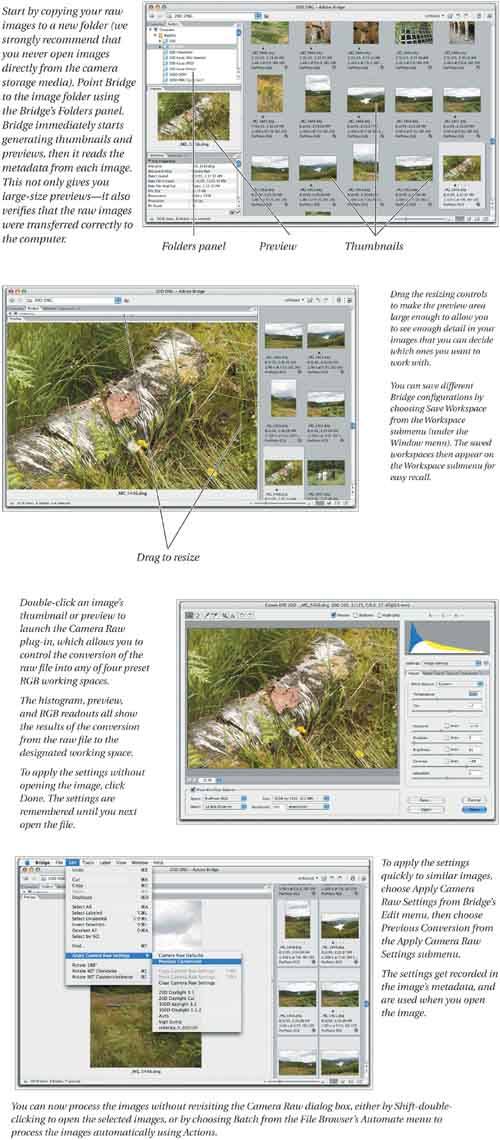Digital Raw Formats
| Camera Raw appears as a file format in Photoshop's Open dialog box, but it isn't actually a single file format. Rather, it's Photoshop's catchall name for files that the Camera Raw plug-in can open, including Canon CRW and CR2 files, Nikon NEF files, and raw files saved as TIFF by various cameras. A list of officially supported cameras appears on Adobe's Web site, currently at www.adobe.com/products/photoshop/cameraraw.html. The URL and the list may change during the lifetime of this book, so if you don't find the information there, keep digging. Camera Raw also offers "unofficial" support for many cameras that don't appear on the list. "Unofficial support" means that Adobe won't provide tech support and makes no guarantees about the quality of the conversions. We won't make any guarantees either, but we've been happy with the results from the unofficially supported cameras we've tried, and the unofficial support generally becomes official with the next dot release of Camera Raw. What Is a Raw Capture?One-shot digital cameras use color filters over each sensor in the area array to split the incoming light into its red, green, and blue components. So, each sensor captures only one color, depending on the filter that covers it. The actual capture is essentially a file that records the amount of light recorded by each element in the array. Considerable processing is required to turn this raw capture into an RGB color image. When your camera is set up to save JPEG files (that's the default for most digital cameras), the conversion is performed by the camera's firmware, using the on-camera settings for white balance, tone, saturation, sharpness, and so on. However, when you tell your camera to save images in its raw format, the processing is deferred until you open the image on the computer using specialized software (like Camera Raw). Why Shoot Raw?Shooting raw images is much more flexible than shooting JPEG. When you shoot raw, the only on-camera settings that affect your capture are the shutter speed, aperture value, and ISO value. All other settingswhite balance, tone curve, color space, contrast, saturationare written into the capture as metadataliterally, data about datathat accompanies the raw information. Camera Raw may use this metadata as guidance for how to process the capture into an RGB image, but the settings have no effect on the actual capture of the image pixels. So raw captures allow tremendous flexibility in postprocessing, letting you reinterpret white balance and exposure with no degradation to the image. Rather than stretching or squeezing levels, you're simply reinterpreting the way the captured photons get converted into an RGB image. Raw capture offers other key benefits, too.
There are several disadvantages to raw, too. Of course, the primary one is the need for processing the images, which takes time. But raw files are also larger than JPEG images, so it may take longer to save them to your camera's storage medium (which fills faster, too). However, we've struggled with most of the raw converters out there, and we're convinced that Camera Raw is one of the fastest availablefast enough to make shooting raw worthwhile for all but the most time-critical applications. Moreover, Camera Raw starts working for you automatically as soon as you point Bridge at a new folder of raw images, quickly generating thumbnails and previews so you can see the raw images in enough detail to make a quick initial choice between the "hero" shots you plan to keep and the less-successful efforts you plan to discard (or revisit later). If you want to simply jump in with both feet, take a quick look at Figure 11-1, then get to work. But the combination of Bridge and Camera Raw is complex enough that you'll probably want to read the rest of this chapter to get the rest of the juicy details! (Bruce has even written an entire book on the subject: Real World Camera Raw with Adobe Photoshop CS2from which some of this chapter was taken.)
|
EAN: N/A
Pages: 220
